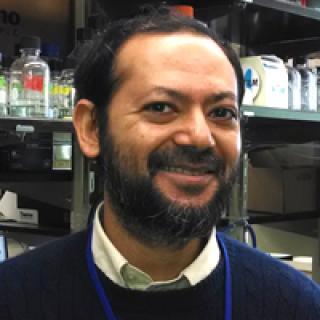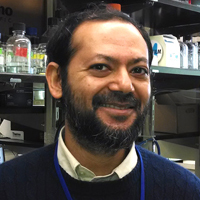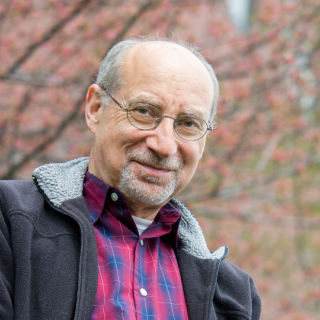
Siddhartha A.K. Datta, Ph.D.
- Center for Cancer Research
- National Cancer Institute
- Building 535, Room 235
- Frederick, MD 21702-1201
- 301-846-1844
- dattasi@mail.nih.gov
RESEARCH SUMMARY
Evolution of drug-resistant human immunodeficiency virus (HIV) is a serious clinical issue that necessitates the design of new drugs against current targets, as well as against previously untargeted stages of the viral life cycle. We use a combination of biophysical, biochemical, and molecular biology techniques to dissect the mechanisms involved in retroviral assembly, with special emphasis on HIV. We hope that basic insights gained into the assembly mechanism(s) could provide a foundation for the design of assembly inhibitors.
Areas of Expertise

Siddhartha A.K. Datta, Ph.D.
Research
The main determinant in retroviral assembly is the Gag polyprotein. When expressed in cells, it is sufficient for the formation of virus-like particles (VLPs). In VLPs, Gag is an elongated molecule, arranged radially.
We have analyzed the properties of recombinant human immunodeficiency virus type 1 (HIV-1) Gag protein in some detail. The protein was found to exist in monomer-dimer equilibrium, using a previously described interface in the C-terminal domain of the capsid protein. A monomeric mutant of Gag was made, and characterized by a number of hydrodynamic and biophysical methods. The results, along with modelling studies, suggest that the molecule, in contrast to its structure in VLPs, adopts compact conformation(s) with the N- and C- termini in close proximity. In the presence of nucleic acid, the recombinant protein spontaneously assembles into VLPs. These VLPs are smaller than authentic VLPs produced in cells. However, addition of inositol phosphates, co-factors which resemble lipid head groups, can correct for this defect. Interestingly, tight binding to hexakis inositol phosphate was found to depend on, and mapped to, both extremities of the protein. Since Gag molecules are extended rods in immature virus particles, they must undergo a drastic conformational change during particle assembly. Collaborative studies using neutron reflectivity have now identified conditions under which Gag can extend. This occurs when the matrix domain binds lipids and the nucleocapsid domain binds nucleic acid simultaneously.
The mechanism by which nucleic acid triggers particle assembly by the Gag protein is not known. We recently found that a very short region of Gag, termed "SP1", undergoes a conformational change when it is at high concentration. We proposed that this region "senses" the local Gag concentration, and that the increased Gag concentration resulting from cooperative binding to nucleic acid would thus lead to a change in Gag conformation, exposing new interfaces required for particle assembly. This hypothesis would explain the contribution of nucleic acid to particle assembly. Current studies are devoted to testing this hypothesis and exploring its implications.
Publications
Solution properties of murine leukemia virus gag protein: differences from HIV-1 gag
Diverse interactions of retroviral Gag proteins with RNAs
On the role of the SP1 domain in HIV-1 particle assembly: a molecular switch?
HIV-1 Gag extension: conformational changes require simultaneous interaction with membrane and nucleic acid
Conformation of the HIV-1 Gag protein in solution.
Biography

Siddhartha A.K. Datta, Ph.D.
Dr. Siddhartha Datta completed his M.Sc. in biochemistry from Maharaja Sayajirao University, Vadodara, India and earned his Ph.D in biochemistry and biophysics while at the Center for Cellular and Molecular Biology, Hyderabad, India. His studies towards a Ph.D involved investigating the mechanistic properties of the alpha-crystallins, small heat shock proteins involved in maintenance of eye lens transparency. Dr. Datta pursued his postdoctoral training in the lab of Dr. Alan Rein in the Retroviral Assembly Section, HIV Drug Resistance Program, NCI, where he is currently a staff scientist.
